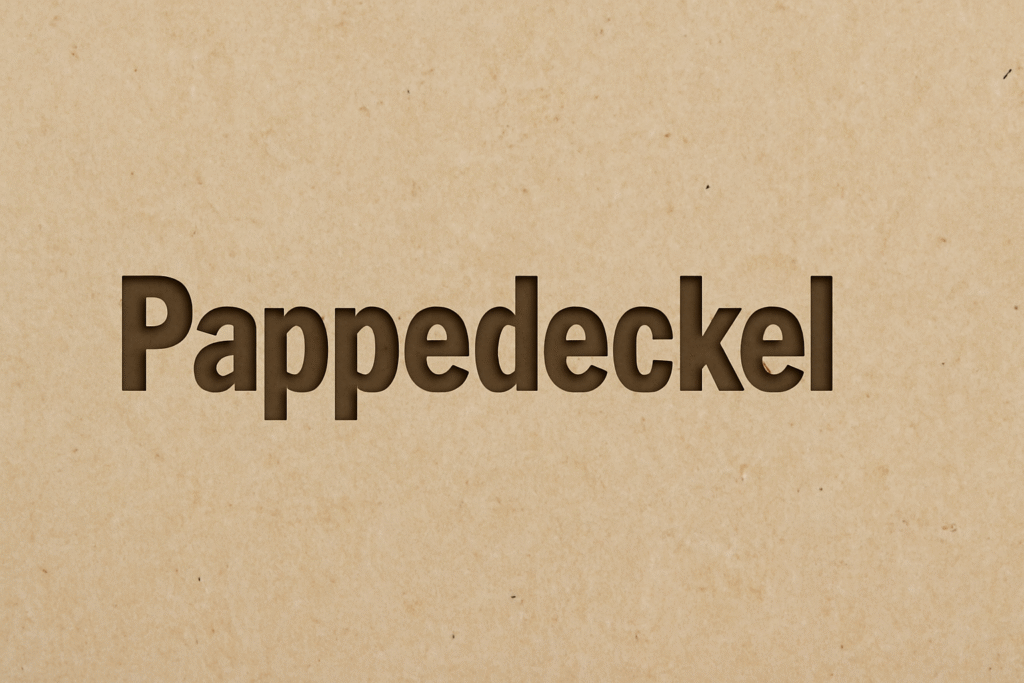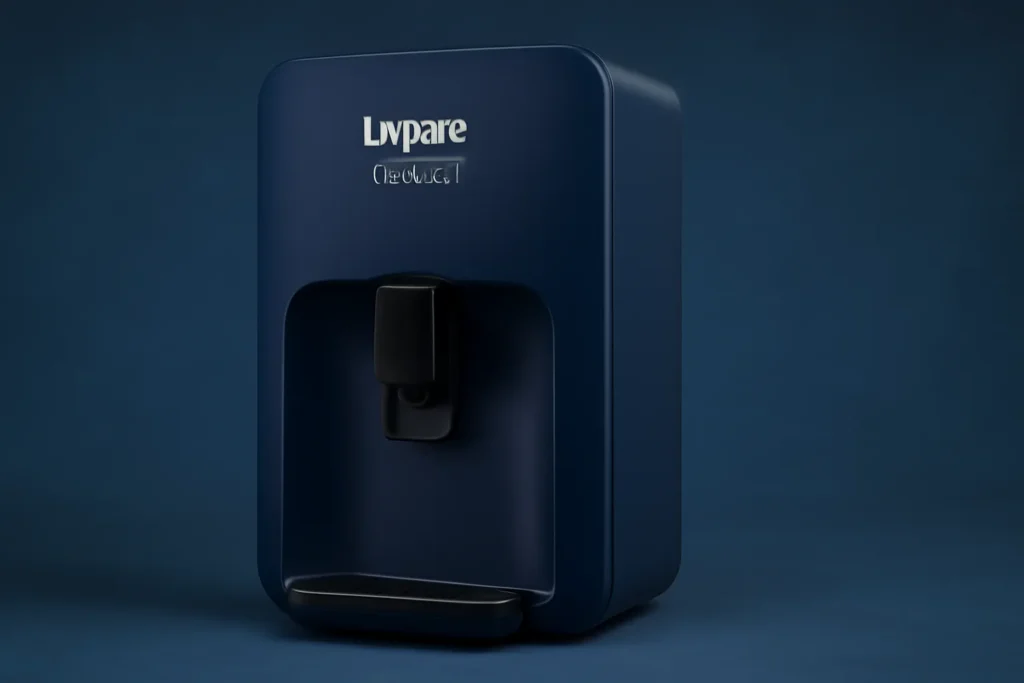Introduction
In recent years, the term Pappedeckel has gained prominence in discussions about sustainable packaging solutions. Originating from Germany, “Pappedeckel” translates to “cardboard lid,” referring to biodegradable lids made from recycled paper or cardboard. These eco-friendly alternatives are increasingly replacing traditional plastic lids in various industries, including food and beverage services, retail packaging, and DIY crafts.
What Is Pappedeckel?
A Pappedeckel is a flat, typically circular cardboard cover designed to seal or protect containers. Unlike plastic or synthetic alternatives, it is crafted from recyclable, biodegradable fibers, ensuring a reduced environmental impact. Its versatility makes it suitable for various applications, from sealing hot beverage cups to serving as a base for creative DIY projects.
The Environmental Impact of Pappedeckel
1 – Biodegradability and Compostability
One of the primary advantages of Pappedeckel is its biodegradable nature. Made from paper-based materials, it decomposes over time without leaving harmful residues in the environment. This characteristic significantly reduces its environmental footprint compared to plastic lids, which can persist in ecosystems for centuries.
2 – Recycling Benefits
It can be recycled multiple times, contributing to a circular economy. Its production typically requires fewer harmful chemicals, making it a safer choice for both consumers and the planet. Many manufacturers now prioritize recycled materials when creating these versatile items, further supporting recycling industries.
Practical Applications of Pappedeckel
1 – Food and Beverage Industry
In cafes and restaurants, itserves as a sustainable alternative to plastic lids for hot and cold beverages. Its insulating properties help maintain the temperature of drinks, enhancing customer satisfaction. Additionally, its lightweight design reduces transportation emissions, aligning with eco-friendly business practices.
2 – Retail and E-Commerce
Retailers use Pappedeckel for packaging various products, including cosmetics, electronics, and clothing. Its sturdy construction ensures product safety during transit, while its customizable surface provides branding opportunities. This not only promotes sustainability but also enhances brand image among environmentally conscious consumers.
3 – DIY and Craft Projects
Beyond its functional uses, it is a favorite among DIY enthusiasts and educators. Its smooth surface is ideal for painting, drawing, and crafting. Common projects include creating custom coasters, bookmarks, gift tags, and even wall art. Its versatility makes it a valuable material for creative expression and educational activities.
Benefits of Choosing Pappedeckel
- Eco-Friendly: Made from biodegradable and recyclable materials, reducing environmental impact.
- Cost-Effective: Affordable compared to alternatives like metal or plastic lids.
- Customizable: Can be printed, shaped, and branded easily to suit various needs.
- Lightweight: Convenient for transport and storage, reducing shipping costs and emissions.
- Versatile: Suitable for food, beverages, electronics, and retail packaging.
Comparing Pappedeckel with Other Packaging Materials
| Feature | Pappedeckel (Cardboard Lid) | Plastic Lid | Metal Lid |
|---|---|---|---|
| Eco-Friendliness | 100% recyclable, biodegradable | Non-biodegradable, harmful | Recyclable but energy-intensive |
| Cost | Low production cost | Moderate | High |
| Weight | Lightweight | Lightweight | Heavy |
| Customization | Easy to print and brand | Limited | Limited |
| Reusability | Limited but recyclable | Single-use mostly | High but expensive |
From this comparison, it is clear that Pappedeckel offers a balanced approach, combining affordability with environmental responsibility.
Creative Uses for Pappedeckel
1 – Educational Tools
Teachers and parents use Pappedeckel to create interactive learning tools. Students can write answers on them and hold them up during discussions, making lessons more engaging. This hands-on approach enhances learning experiences and promotes sustainability awareness among young learners.
2 – Gardening Labels
Gardeners repurpose Pappedeckel as plant markers. They write plant names directly on them, and because they are biodegradable, they blend seamlessly into any garden environment without harming the ecosystem.
3 – Home Décor
It can be transformed into unique home décor items. With some creativity, they can become decorative bookmarks, coasters, or even mini photo frames. These projects not only add a personal touch to home interiors but also promote recycling and upcycling practices.
The Future of Pappedeckel
As environmental concerns continue to rise, the demand for sustainable packaging solutions like Pappedeckel is expected to grow. Innovations in materials and design are likely to enhance its functionality and appeal. For instance, the development of compostable coatings and advanced printing techniques can expand its applications across various industries.
Moreover, as more businesses adopt Pappedeckel, it could lead to a significant reduction in plastic waste, contributing to global sustainability efforts. Consumers play a crucial role by supporting brands that prioritize eco-friendly packaging, thereby driving the market towards more sustainable practices.
Conclusion
The humble Pappedeckel exemplifies how a simple innovation can lead to significant environmental benefits. Its versatility, sustainability, and cost-effectiveness make it a valuable alternative to traditional plastic lids. Whether used in the food industry, retail packaging, or creative projects, it offers a practical solution to reduce plastic waste and promote a circular economy.
By embracing Pappedeckel, individuals and businesses can contribute to a more sustainable future, one lid at a time.
Frequently Asked Questions
1. What is a Pappedeckel?
It is a cardboard lid made from biodegradable materials, commonly used as an eco-friendly alternative to plastic lids in various industries, such as food and beverage, retail packaging, and DIY crafts.
2. How is Pappedeckel different from plastic lids?
Unlike plastic lids, it is biodegradable, recyclable, and made from paper-based materials. It decomposes naturally over time and has a significantly lower environmental impact compared to plastic lids, which take hundreds of years to break down.
3. Can Pappedeckel be customized?
Yes, it can be easily printed on and customized to fit branding needs. It offers a smooth surface for logos, designs, and messaging, making it ideal for businesses seeking sustainable packaging solutions.
4. Is Pappedeckel safe for food contact?
Absolutely! it is made from food-safe materials, ensuring that it is suitable for use in food and beverage packaging, such as cups, containers, and takeaway orders.
5. How can Pappedeckel be disposed of?
It is compostable and biodegradable. It can be disposed of with organic waste or sent for recycling, making it an environmentally responsible option compared to non-biodegradable packaging materials.
6. Can Pappedeckel be used for DIY projects?
Yes! Pappedeckel is popular for DIY projects due to its durable yet lightweight nature. It can be used to create custom coasters, gift tags, bookmarks, and more. Its smooth surface is also perfect for painting and crafting.
7. Where can I buy Pappedeckel?
It is available from suppliers specializing in sustainable packaging solutions. Many online retailers and eco-friendly packaging companies offer Pappedeckel in various sizes and designs.
8. Is Pappedeckel cost-effective?
Yes, it is generally more affordable than plastic or metal alternatives. Its cost-effectiveness, combined with its environmental benefits, makes it a great choice for businesses looking to reduce their carbon footprint while maintaining quality packaging.



